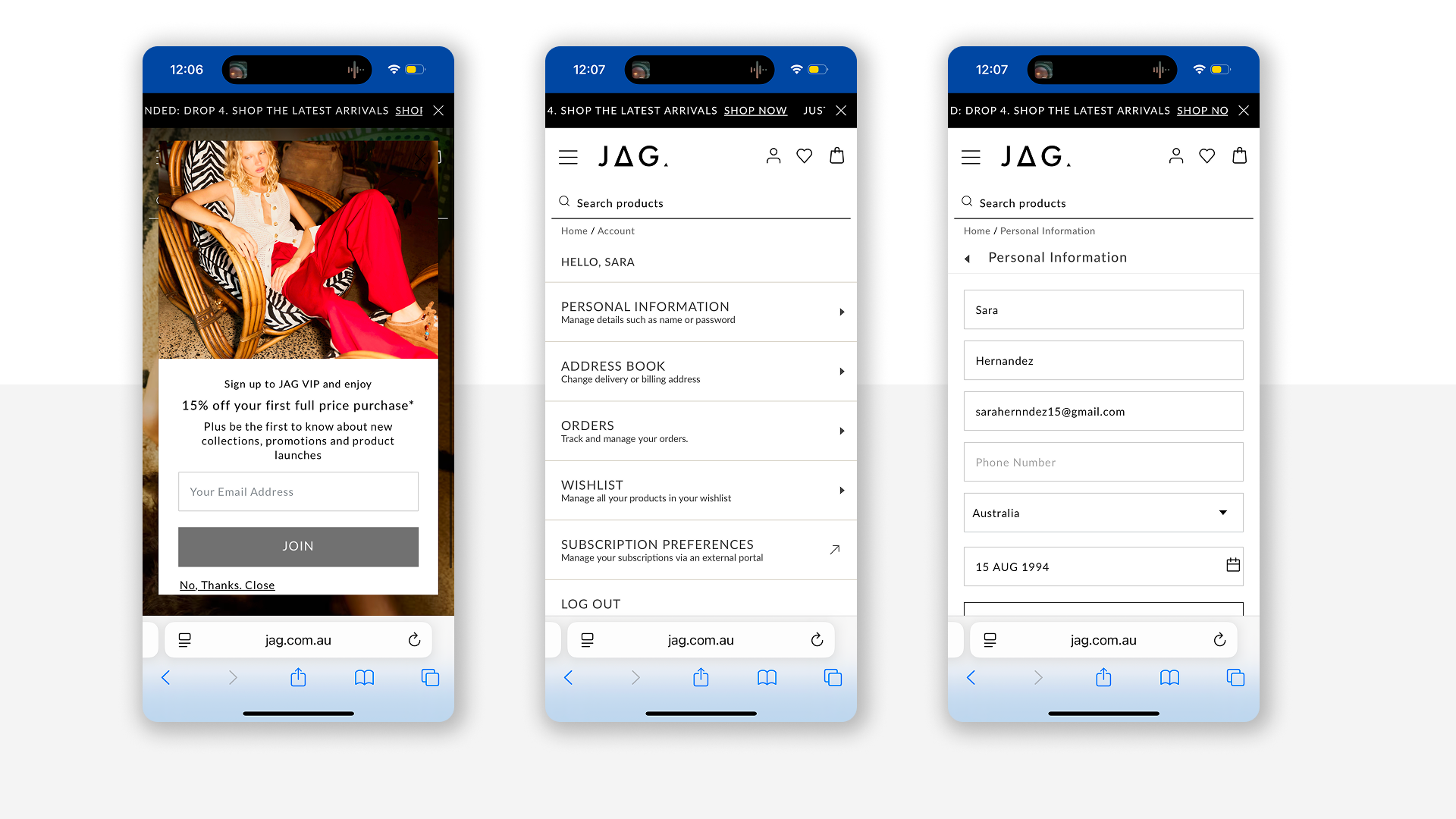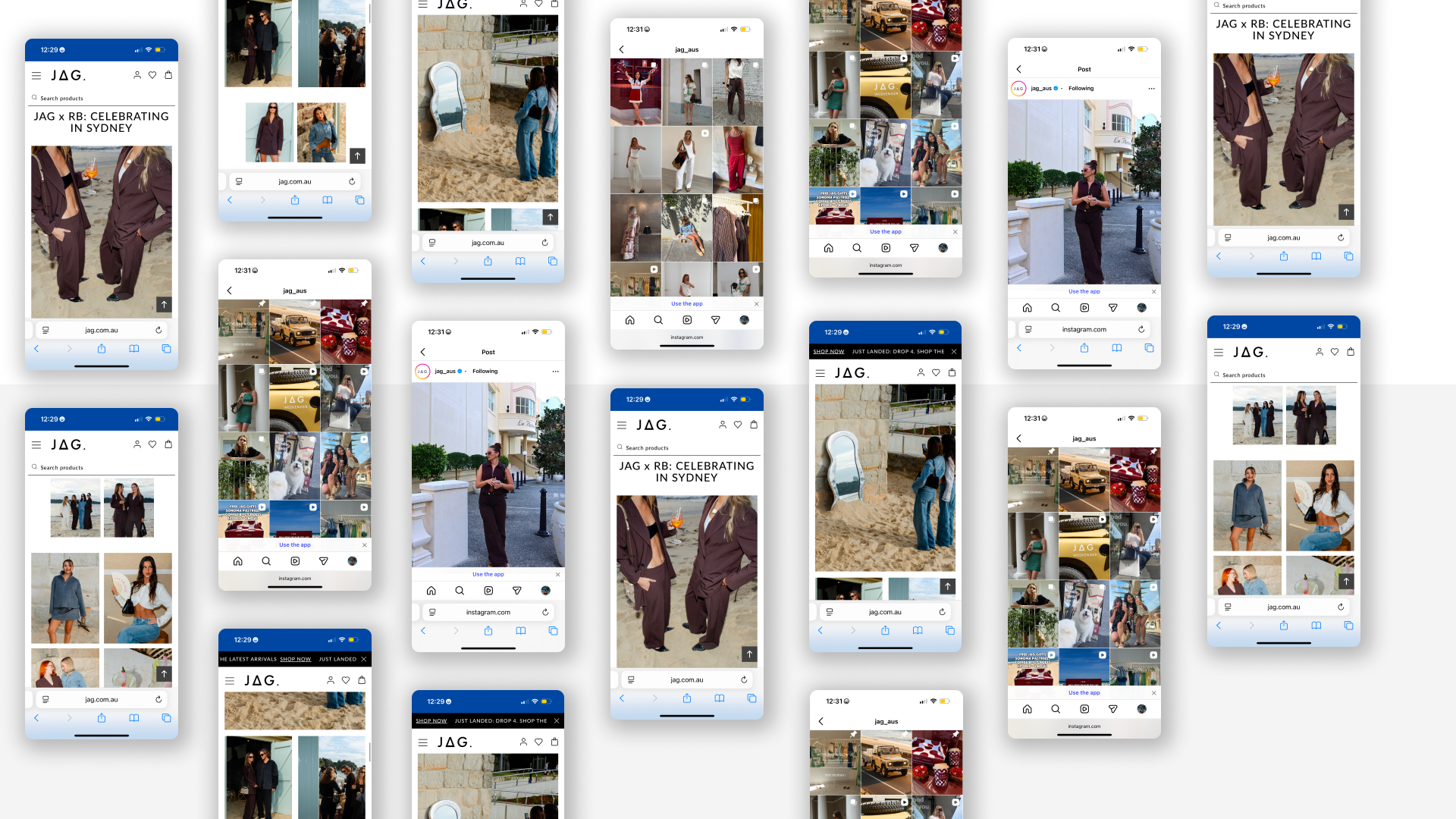
JAG is a relatively small fashion e-commerce brand that has experienced significant growth over the past couple of years, largely driven by its strong social presence and influencer strategy. Customers who purchase from JAG love the products and often become brand advocates.
However, JAG currently doesn’t have a loyalty program beyond an initial 15% off welcome offer for new sign-ups.

Re-engaging existing customers is more expensive than acquiring new ones. While the brand’s overall growth has been positive, purchase frequency remained relatively low. As a retention strategy, we decided to introduce gamification through a loyalty program.
The loyalty program aimed to:
- Act as an advocacy tool to support influencer collaborations
- Reward customers for completing specific engagement actions
- Replace promo codes — which are often shared online — with a more controlled and personalised discount system
- Provide birthday vouchers and refunds
- Encourage referrals
- Collect higher-quality customer data
- Incentivise frequent purchases through rewards
Step 1 – We conducted a competitor analysis to understand the key functionalities and offerings of the most successful loyalty programs in the market — including Mecca, Country Road, and Rebel — and to identify opportunities.
Step 2 – Using user stories “As a [persona], I [want to], [so that]”, we gathered requirements from all stakeholders — including customers, the e-commerce team, marketing, customer care, and digital — and classified priorities into 'must-haves ' and 'nice-to-haves'.
Step 3 – We discussed the ‘wishlist’ of functionalities and the technical approach with our CRM/CDP partners and developers. Then we organised the project into different pahses.
Step 4 – We sketched the agreed MVP functionalities - Phase 1 - to get a cost estimation.



This pop-up appears only on desktop when the user hovers over the ‘My Account’ icon. Clicking the icon opens the ‘My Account’ page.
The purpose of the pop-up is to provide a quick overview of the user’s tier and rewards status.
On mobile, it appears at the bottom of the hamburger menu.

Both the mini cart and checkout will display dynamic error messages based on the customer’s login status. If the customer is logged in, the system will also check whether any rewards are active on their profile.
This messaging will remain consistent across the mini cart and all steps of the checkout.

The checkout has three steps: personal details, delivery, and payment. The messaging remains the same as above, with the only difference being that the third step includes reward redemption for customers who have an active reward.

